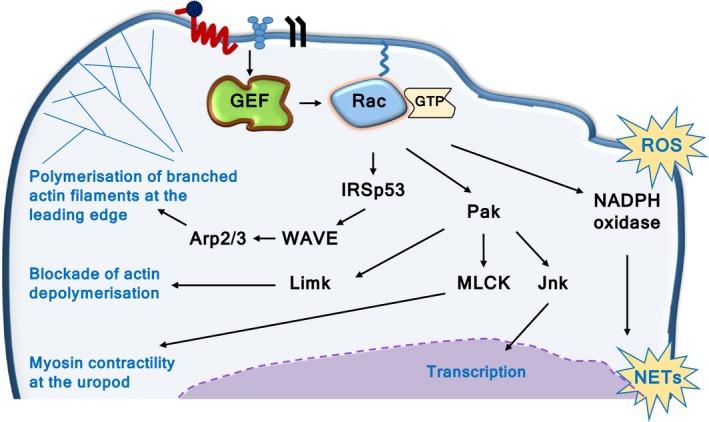Figure 2.

Rac in neutrophil adhesion and migration. Rac‐GTPases control actomyosin cytoskeletal dynamics in several ways, including the IRSp53, WAVE, Arp2/3 pathway, which induces the polymerization of branched actin filaments at the cell periphery to enable firm adhesion and spreading. Localized Rac activity induces leading edge formation and polarization. In addition, Rac blocks actin depolymerization through the Limk pathway and stimulates myosin contractility at the uropod through MLCK. Combined, these pathways stabilize polarity and enable migration, as well as other processes such as degranulation and phagocytosis. In addition, active Rac is an integral subunit of the NADPH oxidate complex, which produces ROS and thus controls the ROS‐dependent production of NETs. Finally, Rac also controls gene expression through Jnk
